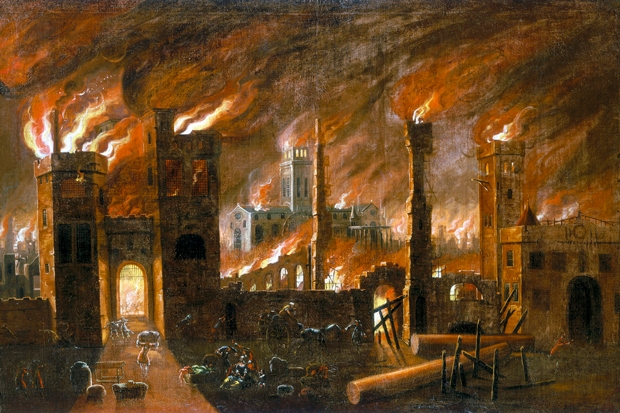Spectator readers know Andrew Taylor from his reviews of crime fiction. Many will also know him as an admirable writer of the stuff. In a recent issue, however, he remarked that there are fewer murders now, and added that this made things difficult for crime novelists. Detection has been taken over by the scientists, DNA providing the solution more reliably than Hercule Poirot’s little grey cells. Find a suspect and DNA will tell you if he dunnit.
This is boring. So it’s not surprising that for crime writers the future looks to be the past, where science is primitive and the police have no computer database — where indeed there may be no regular police force at all.
London is burning. It’s 1666, not 1940; it’s the Great Fire, and St Paul’s is ablaze. Marwood, a young man who narrates part of the novel, watches fascinated and then pulls a young boy from the flames. The boy is actually a girl and bites his hand to free herself. She is called Cat, and her story, told in the third person, alternates with Marwood’s. They are connected, though they don’t know it, through their fathers, both of whom are Fifth Monarchy Men: religious zealots and Republicans. Marwood’s is now senile, Cat’s anything but; he is still politically active, dangerous and ruthless. The search for him is at the heart of
the novel.
When young Marwood was a boy he sat on his father’s shoulders to watch the
execution of Charles I. It gave him nightmares for months afterwards. To the father, the King was ‘the Man of Blood’; to the son, a sad-looking gentleman who met his death with courage and dignity. Now Marwood works for the government, having surprisingly obtained the job for reasons of which he is ignorant and which we learn only when he does, in the last chapters of the novel.








Comments
Join the debate for just £1 a month
Be part of the conversation with other Spectator readers by getting your first three months for £3.
UNLOCK ACCESS Just £1 a monthAlready a subscriber? Log in